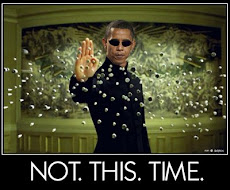Sunday, February 24, 2013
Black In Latin America'
Between 1502 and 1866, 11.2 million Africans disembarked from slave ships in the New World during the Middle Passage. Of those 11.2 million people, only 450,000 came to the United States. The rest of the African slaves who survived the journey were taken to the Caribbean, Latin America and South America.
"Brazil got 4.8 million slaves alone," says historian Henry Louis Gates Jr. "When I was growing up, I thought to talk about the slave trade was to talk about the experiences of our ancestors here in the United States. But it turns out that the real 'African-American experience' — judging by numbers alone — unfolded south of our borders."
That world, says Gates, is the one he wanted to explore in Black in Latin America, a book and four-part documentary series airing on PBS, which traces the cultural history and the lasting impact of the millions of slaves who arrived in Brazil, Cuba, the Dominican Republic, Haiti, Mexico and Peru.
"The average American — and even the average academic and the average journalist — has no idea of the huge number of black people who landed south of the United States over the course of the slave trade," he tells Fresh Air's Terry Gross.
A Spectrum Of Race
The descendents of slaves brought to Latin and South America, says Gates, don't identify as white or black the way many Americans do. In Brazil, there are 134 categories of blackness to describe someone of African descent.
"[They say], 'I'm not black. I'm murano [or] I'm kubuku,' he says. "You could say that these societies have refused to be locked into this ridiculous binary opposition between black and white the way we are here in America, and they've socially constructed race or ethnicity in a more subtle way than we could ever imagine."
In each of the countries Gates examined, there were also policies enacted to "whiten" the complexion of the country soon after receiving an influx of slaves. In Brazil for instance, 4 million white Europeans and 185,000 Japanese immigrants were allowed into the country between 1884 and 1939. Cuba and Mexico also had similar policies in place.
"They were trying to do two things," says Gates. "They wanted to bring in white families so that the white population would increase. But they also assumed, because so many of these indentured immigrants would be men, that interracial sexual liaisons would ensue — and indeed they did. So whitening was to be achieved in two ways — through white people marrying white people — and a browning movement, when a series of racial gradations would be created through interracial sexuality."
In many countries in Latin America, says Gates, race is no longer recorded as part of the census.
"But there's a slight problem with that," he says. "If because of historical reasons, the people who are disproportionately discriminated against happen to be that group of people with dark skin, kinky hair and thick lips, how do you count them if you don't have a census category?"
In both Mexico and Peru, political activists are fighting for the right to have race reintroduced in the federal census.
"Until that's done, political activists can't argue for affirmative action or more equal opportunity because they have no statistics," says Gates. "A great academic told me that he went to the government to complain about the lack of blacks in higher education, and he was told, 'We don't have racism because we don't have races.' And if you can't count the race, then you can't have racism. And that is the pernicious argument that they're trying to fight with this movement to expand the categories on the federal census."
Black in Latin America E03, Mexico and Peru: The Black Grandma in the Closet
Black in Latin America - Episode 1 - Haiti & the Dominican Republic - An Isl
Black in Latin America - Episode 2 - Cuba The Next Revolution
Black in Latin America - Episode 3 - Brazil - A Racial Paradise
Black in Latin America - Episode 4 - Mexico & Peru - A Hidden Race
Subscribe to:
Posts (Atom)








































